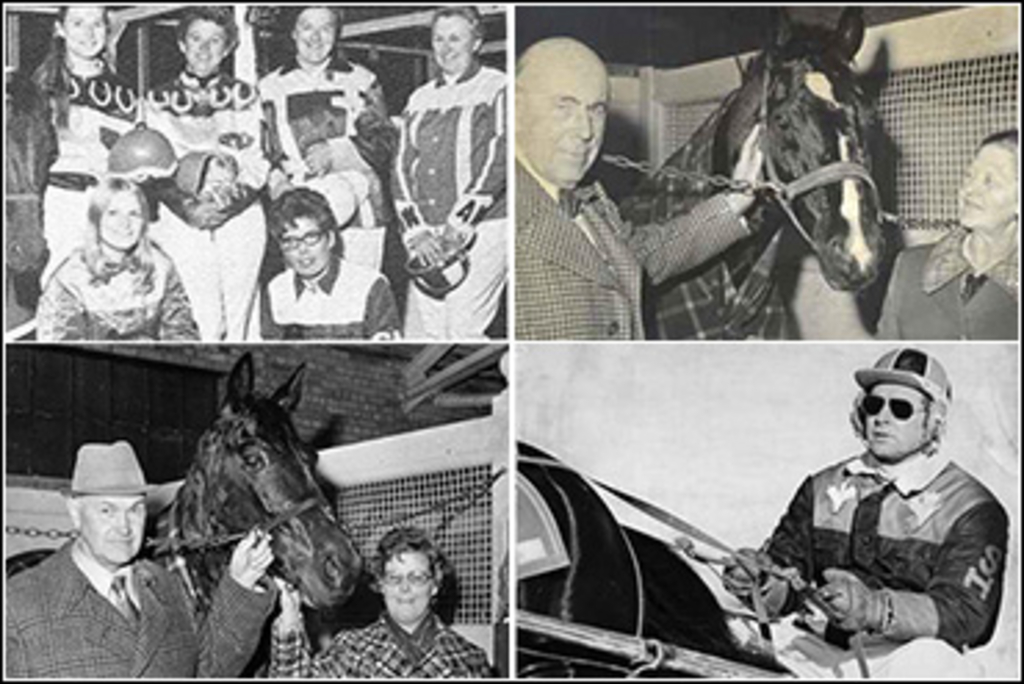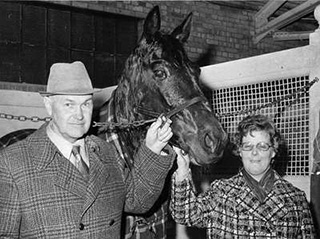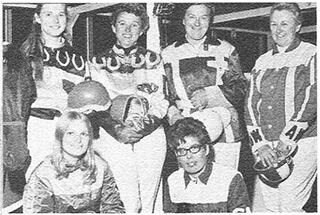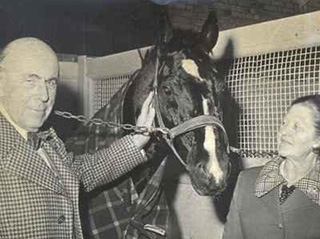
 In this week's edition of Rewind Robert Smith recalls the impact of establishing Mohawk Racetrack on the surrounding area.
In this week's edition of Rewind Robert Smith recalls the impact of establishing Mohawk Racetrack on the surrounding area.
About two years ago, Mohawk Racetrack rather quietly and subtly observed a momentous milestone. First opened in May of 1963, the 'Hawk' reached the 50-year mark back then. When the Ontario Jockey Club decided to build this brand new state of the art facility, it ushered in a new age in Central Ontario harness racing. In previous eras, the focus of attention was always on the Metropolitan Toronto area; this move was a radical departure. The stabling area at Mohawk was literally 'carved' out of the woods.
Situated on a beautiful parcel consisting of some 450 acres in Halton County, the new raceway was truly in a countrified setting. Surrounded by stands of birch trees, maples and tall pines, it was a lovely spot. The pastoral countryside was dotted by gently rolling slopes and neatly kept farms, many owned by multiple generations of the same family. Oddly despite the abundance of farmsteads, very few horse owners populated the area but this was about to change.

Lloyd and Mary Chisholm with stable star Arawana Snapshot in this 1973 photo (The Milton Champion)
In the beginning, about the only local resident with close ties to the sport was the late Lloyd Chisholm. His farm had been a landmark for many years in Nassagaweya Township, perched just to the north of Highway 401. His family was among the area's first settlers dating back to 1802. Originally a Guernsey cattle farmer, Mr. Chisholm turned his attention to harness racing many years previous to this. His operation, though small, produced more than a few good performers bearing his special stable name Arawana. Today in his memory, the S.B.O.A. as its highest honour presents a trophy annually to an outstanding person involved in harness racing. The current year's winner was Jack Darling chosen for his unselfish and tireless efforts to help others.
An interesting story is told about Mr. Chisholm and his wife Mary and shows how folks can meet in a variety of ways. The tale relates that Mary was driving past the Chisholm farm and saw a horse caught in the fence. She stopped and did whatever it took to free the horse. As a further gesture of kindness, she stopped at the farmhouse to relay the news and assure the owner that all was well. Legend has it that they began courting and eventually married.
Ten Years After Mohawk Opened (Circa 1973)
Relatively soon after the start up of Mohawk came many fine people from diverse backgrounds who were engaged in some form of activity to do with the sport of harness racing. They settled in various areas, on all kinds and sizes of properties.They soon occupied some 1200 acres, making it one of the most popular horse havens in the Province.
Perhaps the largest farm belonged to Brampton owner Howard Oster, a 125-acre farm on the Guelph Line managed by Dr. Russ Furness. This fine layout contained top notch stabling and an excellent half-mile limestone training track.

Participants from the 1970 Powder Puff Derby. Front row, from left: Sandy Burrison and Shirley McLean. Back row, from left: Callie Hillman, Jacki Hillman, Hilda Doleschell and Viola Walker. The race winner was Ben Ben driven by Jacki Hillman and trained by Serge Dubord as part of the John Hayes stable. Mrs. Hillman received a beautiful sterling silver compact for her fine drive.
On the Second Line, just a bit north of Mohawk was one of the Township's most beautiful layouts. The 100-acre farm belonged to Fritz and Hilda Doleschell, both devotees of standardbreds. Hilda, a one time ranking Ontario tennis player, was also unofficially listed as a current top notch baker of apple strudel. Both she and her husband Fritz drove trotters in their native Austria. Hilda was a competitor in a 1970 Powder Puff Derby at Greenwood.
Also in the area, just east of Mohawk was a school for horsemen, operated since 1968 by Glen Anderson, a horseman of note as well as an auctioneer and official. In the north end of the Township was the neat 10-acre farm of then 29-year-old Nelson White. The popular and successful trainer resided there with his wife Debbie and two-year-old son John.
Located on the Guelph Line near 15 Sideroad was the Wolfhill Farm, the property of Mr. and Mrs. Wolfgang von Richthofen. He was also a successful thoroughbred trainer as well as being a trustee of the Ontario Jockey Club. Their specialty was European-bred trotters. When the famous trotting mare Une de Mai first set foot on Canadian soil in 1972 it was at this farm. The French mare prepped here for several engagements including the Maple Leaf Trot.

Mr. and Mrs. Wolfgang von Richtofen owners of Wolfhill Farm with their trotting mare Varioca M
Another nice farm of 100 acres south of Campbellville village belonged to Martin and Anna Dzidrums. Martin was a chemical engineer and his wife, who possessed multiple degrees from McMaster University as well as from France, worked as a social worker. Their top horse at this time was the trotter Easy Living.
Others in the area included Elmer and Ilona Nicholson on their 35-acre farm. On the second line was Bruce and Jean Small who had a training track at their 100-acre property. Also headquartered at this location was Andy Avery who operated a public stable.
Just north of Moffat Mr. and Mrs. Oskars Zirnis operated a standardbred farm. These transplanted Latvians had a long history with trotting horses. Their son George inherited their interest in the sport and campaigned a public stable on the Ontario circuit at this time.

Horseman Stan Henderson, whose farm was not too far from Mohawk Raceway
Rounding out the area's horse people were a few more located in various parts of Nassagaweya. A partial list would include a very young Steve Haddon, Tom Burke with five horses in his care and John Currie and Marshall Paul both with just one horse stables. Others were Joe Grodnis and Doug Given near Moffat with Bob Croft, Roy Speller and Ed Boland in the northern part of the Township.
Just south of the village of Campbellville was the operation of Stan Henderson. He gave up his job as vice president with a Kitchener electrical firm to take up the sport on a full-time basis. In a relatively short time he was a successful trainer and breeder of horses.
Suffice is to say that the coming of Mohawk in 1963 had a profound and lasting effect on this lovely part of Ontario. I am indebted to Wm. Galvin for much of the material contained in today's Rewind.


The place seemed to be
The place seemed to be plagued with power issues, the way I remember it. And, if it wasn't the power it was the fog!
from May 13, 1964 Harness
from May 13, 1964 Harness Horse:
A power failure forced cancellation after the fourth race of last Friday's card at Mohawk Raceway, a $3,000,000 plant 22 miles northwest of Toronto.
Raceway manager Ed Bradley announced the cancellation When Ontario hydro officials could not give any assurance as to when the power might be restored.
The plant was blacked out two minutes before the fifth race was to start. Auxiliary power was turned on but the emergency system was never meant to operate the raceway. The crowd of 3,700 were given admission tickets for another night of racing.
It was the opening week of a six-week meeting at the five-
eighths mile track which was opened for the first time in the Spring of 1963.